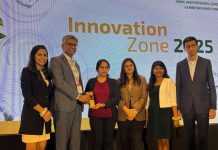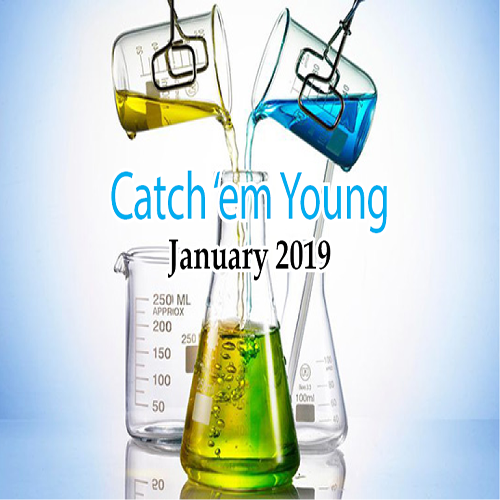In this 25th edition of Chemingineering, our columnist goes down memory lane and recalls columns featuring Emerging Technologies and makes a case for not only including them in engineering curriculum, but also use them as tools for enhancing engineering education.
This is the 25th edition of Chemingineering and it is but natural to look back on the columns over the last two years. Almost all of those columns have featured the 3 Es – Energy, Environment and Emerging Technologies. The last one, Emerging Technologies, a term that collectively defines a suite of digital tools that are powering the fourth industrial revolution, is particularly worth recalling at this point of time for a special reason – the 4th E: Education.
Emerging Technologies
The All India Council for Technical Education (AICTE) has decided to disallow new engineering colleges from the academic year 2020-21. In doing so, AICTE has accepted the recommendation of the government committee headed by IIT-Hyderabad chairman. The committee has further urged AICTE to introduce undergraduate engineering programmes exclusively for emerging technologies like Artificial Intelligence, Blockchain, Robotics, Quantum Computing, Data Sciences, Cybersecurity, 3D Printing and Design. It is deeply satisfying for this columnist to note that most of these and other emerging technologies have been featured in these columns during the last 24 months – Drones (February 2017), Artificial Intelligence (August 2017), Blockchain (December 2017), Virtual Reality (January 2018), Internet of Things (February 2018), 3D Printing (December 2018).
Chemical Industry’s Reluctance
A recurring refrain in these columns has been to question chemical industry’s hesitation to embrace the new technologies wholeheartedly. It is an issue that has been much debated by many industry analysts and management consultants. That chemical industry is a laggard when it comes to adopting new digital technologies is an open secret. Much of this is attributed to a deep set of conservative values that pervade the industry. But there is much more to it than this rather simplistic explanation.
The major reason for chemical industry’s tardiness in adopting digital technologies is skewed perception – overestimating risks and underestimating benefits. This is totally understandable when many decision makers and those at the helm of affairs have been schooled during the pre-Internet era. The explosion of knowledge has been so exponential in the last decade that there is already a yawning divide among the skills of post-Internet engineers. Only appropriately schooled engineers will be able to take informed risks and provide the vision to lead the chemical industry into uncharted waters.
MIT’s Initiative
It is not just Indian educationists who are seized about the new direction that engineering education should be headed to. MIT, the Mecca of engineering education, is concerned too. This rethink is succinctly enunciated as – “we are targeting MIT’s education at the industries of the future rather than the industries of the past”. A global review of cutting-edge practice in engineering education was published last year as part of MIT’s “New Engineering Education Transformation” (NEET) initiative. The review is made up of interviews with 178 thought leaders and case studies from four different universities.
Industry of Future
The industry of the future will be producing a new generation of materials using new generation of machines and systems with entirely different kind of resources. Emerging technologies will drive and power the industries of future. If we have to choose two words to define the business of the future, they would be – smart and bespoke.
Smart
Everything in future would be smart – homes, offices, stores, schools, factories, warehouses, vehicles, entire cities and of course people. The essence of smartness is speed and the ability to respond intelligently to uncertain and unknown situations. We are already experiencing such situations today in natural calamities of unprecedented magnitude and outbreaks of unknown epidemics. There would be a very real urgency to find solutions to problems in energy, environment and healthcare. The smartness would be exemplified by a hyperconnected world in which every object will communicate with another object.
Bespoke
The future world will have designer molecules and materials, customised to suit specific applications. This will be particularly evident in healthcare, where with genetic mapping in place, patients will be prescribed bespoke medicines, which they would be even able to produce in situ at their homes. Specialty polymers and coatings would be synthesised in small volumes to suit a specific local situation. Efficiency in areas of energy and environment would strongly depend on customised nanostructures. Specialisation and not scale will differentiate businesses in the future. Performance and not volumes will drive profits.
Technologies for Teaching
Emerging technologies should not only be taught to new generation of engineers but can also be used as tools to improve the quality of their teaching. Emerging technologies like Virtual Reality, Internet of Things and 3D Printing can be used to support and enhance the quality of engineering education. But engineering educators have been reluctant in adopting such technologies for teaching and learning. Delft University of Technology, Netherlands, has identified Virtual Reality (VR) as the tool that can have most impact on engineering education. VR mimics our sensory experience of the world and constructs an authentic learning environment. It helps to create settings that accurately mirror the real world and simulates learning with strong spatial and physical focus.
Multidisciplinary Collaboration
Last year’s Nobel Prizes confirmed and consolidated the growing trend of dismantling silos into which scientific knowledge have been deposited and goes a long way in unifying them under a single umbrella. The citation for Physiology and Medicine Nobel, awarded to work on molecules that act as inhibitors of our body’s immune system to fight cancer, reads like the description of a chemical reaction mechanism. The Physics Nobel was awarded for the invention of a tool that can be used as “optical tweezers” for assembling chemical compounds by manipulating one atom at a time. The Chemistry Nobel winners sought inspiration from the biological concept of “directed evolution” to synthesise new enzymes and antibodies. The future of industry lies in multidisciplinary collaboration, which is also the premise of emerging technologies.
Finland’s Experiment
The Nordic nation, famous for innovation, has embarked on an ambitious experiment at the beginning of this year. It plans to teach the basics of Artificial Intelligence to 1% of its citizens, about 55,000 people. Through this the country hopes to capture a niche position as world leader in the practical applications of AI. We will do well to emulate this kind of experiment in teaching emerging technologies to our engineers and engineering students.
Readers’ responses may be sent to: k.sahasranaman@gmail.com or chemindigest@gmail.com































